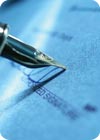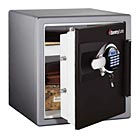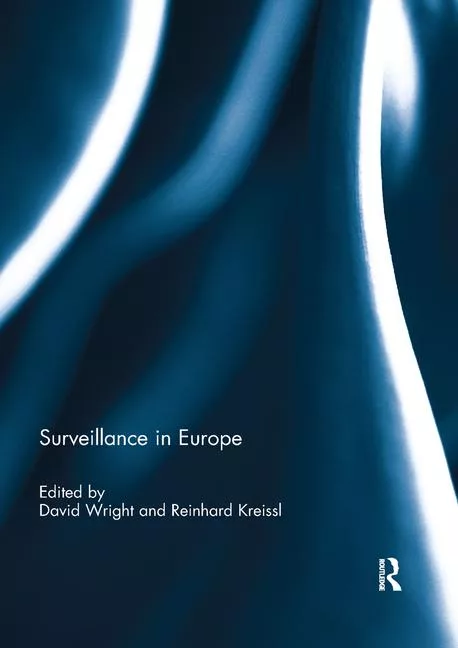Sign in Please

With dynamic signature verification, the system views multiple biometric characteristics of a signature compared against a reference signature.
When is a signature the right signature to avoid fraud and increase security? When it is verified.
There are major business gains when certain organizations use newly-emerging signature verification. The biggest is labor savings, according to David Pintsov of Peladon Software, who uses signature verification in his business. Involved in various document management applications, his firm works with government, insurance, banking, financial services and other businesses.
“When there is a need to verify signatures on documents,” said Pintsov, "companies must compare the signature on a document with a reference signature on file to determine if they are similar or different."
When done manually, “it is a rather laborious task,” he pointed out.
By using automated signature verification, “one gains both in security and accuracy,” said Pintsov. But he cautioned: Since handwriting is quintessentially a human activity, it is humans who ultimately must make the determination of the authenticity of signatures.
But a combined man-machine signature verification can make a big business difference and significantly contribute to the bottom line, contended Pintsov.
Signature has always been one of many biometrics that include finger, hand, iris, retinal and even keyboarding patterns.
In dynamic signature verification, multiple biometric characteristics of a signature are scrutinized and compared against a reference signature kept on file to make a conclusion measuring the confidence value of the signature’s genuineness. If several genuine reference signatures are available, the measure of the stability of the particular feature is developed and used to estimate the probability of deviations observed in the questionable signature.
The most advanced signature verification systems employ a combination of engines using different approaches. Each engine analyzes biometric characteristics such as speed, acceleration, deceleration, stroke sequencing and length, pen pressure and timing information received directly during the act of signing together with other innovative technology that scrutinizes signature shape, according to Yuri Prizemin of Parascript, which provides technology to Pintsov.
Finally, the results received from different methods of analysis are combined to provide a reliable measure of the likelihood of coincidence between the signature in question and genuine reference signatures. The success of dynamic signature verification in such systems relies on analysis of graphical representation of a signature and biometric characteristics received during the process of signing. Use of several independent methods of analysis leads to a dramatic performance improvement and adds substantial robustness to the signature verification software.
INVOLVED DIFFERING CHARACTERISTICS
Since there are many different characteristics involved in the analysis, the biometrics ensures a high efficiency of verification even if certain characteristics of signing (i.e. pressure) are not tracked. This important aspect of signature authentication reduces dependence on the type, specifics and quality of pen-enabled or pointing devices. For example, pressure characteristics are very important if the signature is obtained on pressure sensitive devices and less important if captured on pointing devices built into many laptop computers that are not sensitive to exerted pressure, said Prizemin.Technological advancements have increased the accuracy of biometrics systems while making them more widely affordable as a viable method of verification.
Due to the level of reliability, convenience and high security that biometrics provides, signature is already being used extensively in a number of applications to provide a competitive edge to alternative technologies. At the same time, not all biometric methods are equally acceptable in all industries and all applications. One of the greatest challenges of biometrics -- privacy concerns due to its relatively intrusive nature. For example, fingerprinting and iris scans are not accepted in many retail, banking and financial services applications. Dynamic signature verification is a much more easily digested biometric-based method of identification, contended Prizemin. The act of signing one’s name is socially accepted and commonplace in our legal and commercial lives. As such, individuals are less likely to object to their signature being confirmed as compared to other possible biometric analyses. This allows dynamic signature verification to be seamlessly integrated into existing working processes.
Not only is dynamic signature verification a less controversial method, it is also one of the most accurate, intuitive, fast and cost effective and operates with compact data. All these factors make it an ideal solution for document authentication and enterprise workflow. Nowadays a wide range of equipment is available for digitizing signatures: palmtop or PDA-type devices, digitizer tablets, pointing devices, and smart phones. Biometric signature verification software universally supports any form of pen-enabled input device on which a signature is written.
Given its applications and potential for sophistication without being overly intrusive, dynamic signature verification represents an ideal bridge between the long-recognized practice of signing a document and the reliable authentication and authorization that are increasingly needed for many commonplace activities and transactions, according to end-users like Pintsov.
SIDEBAR: Fraud Begets Biometrics
The dramatic rise of financial fraud has become a scary trend in today’s world. According to recent studies, approximately 9.2 million Americans suffered from identity theft crimes in 2004, costing consumers $5 billion, and banks and corporations $48 billion. The growth of these crimes has resulted in a renewed interest in advanced security means. Institutions are increasingly demanding more reliable, less costly authentication and authorization for everyday activities, such as performing financial transactions, boarding an aircraft, entering a secure physical location or crossing international borders.Biometrics is an emerging technology that is quickly garnering wide attention for its promises to alleviate security breaches and offer solutions to key challenges, such as financial theft and fraud, faced by real-world enterprises. Biometrics is used to verify identity by way of physiological traits or behavioral characteristics that are unique to each individual and cannot be forgotten, lost or stolen. It can take the form of several different techniques such as hand geometry, iris or retinal scans, dynamic signature verification, face and voice recognition, fingerprinting and others.

Complete with a dual-lock option, end-users and security personnel can operate the biometrics-based safe with either a fingerprint swipe or programmable electronic code—both of which are self-programmed.
SIDEBAR: A Safe Finger; a Finger Safe
Finger biometrics, already integrated into doorknobs, has now moved to safes and security-storage containers. For instance, a new Sentry Safe Fire-Safe Fingerprint Safe has a unique, patented biometric fingerprint lock. The fire-resistant and water-resistant safe is suited for multiple applications, such as CEO homes, offices and businesses.Complete with a dual-lock option, security personnel can operate the safe with either a fingerprint swipe or programmable electronic code -- both of which are owner programmed. The biometrics-based lock features a tubular key and a backlit advanced electronic LCD keypad, allowing up to seven users including one manager with program override capabilities and six additional users for a total of 14 fingerprints stored.
The Fingerprint Safe is ETL verified for 2-hour proven fire protection of digital media including CDs, DVDs, memory sticks and USB drives up to 1850°F.
Looking for a reprint of this article?
From high-res PDFs to custom plaques, order your copy today!



